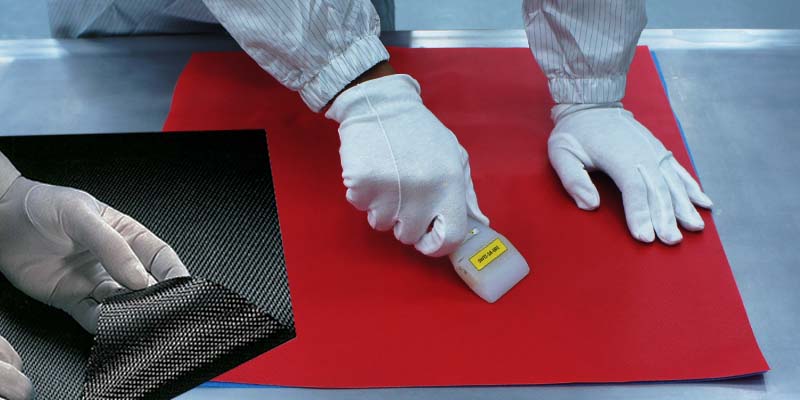
Pre-preg(프리프레그, Pre-impregnated) : Pre-preg is a reinforcement material that is pre-impregnated with resin.
Autoclave cure : Autoclave curing has traditionally been used to achieve the desired fiber content (resin-to-fiber ratio) and the absence of resin voids to produce light weight and strong components. Autoclave curing achieves this by placing the part under vacuum in an autoclave and then pressurizing the autoclave during the heated cure cycle. It improves mechanical properties and it is simple to manufacture, but the process is complex and the machine, autoclave, is expensive.
OOA(Out of Autoclave) cure : Out of autoclave composite manufacturing is an alternative to the traditional high pressure autoclave curing process. It is a process that achieves the same quality as an autoclave but through a different process. We can save energy and cure cycle. This process is good for environment by reducing greenhouse gas exhaustion.
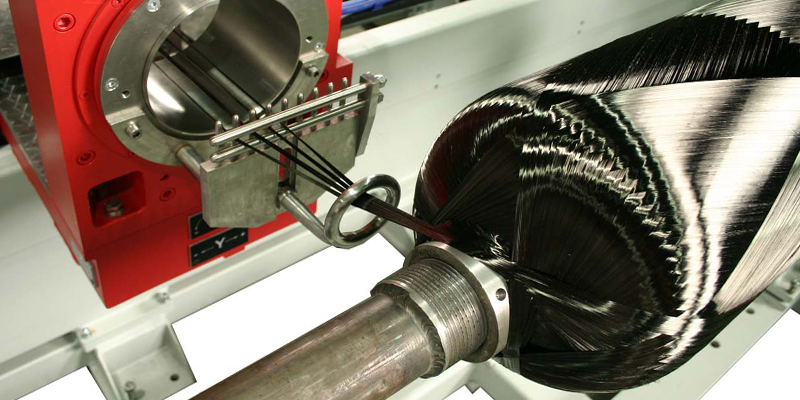
Filament winding is a fabrication technique mainly used for manufacturing open (cylinders) or closed end structures (pressure vessels or tanks). The process involves winding filaments under tension over a rotating mandrel. Filament winding is well suited to automation, and there are many applications, such as pipe and small pressure vessel that are wound and cured without any human intervention.
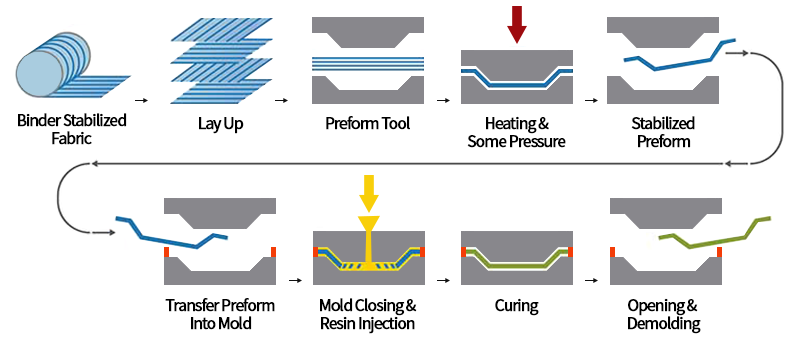
RTM is a process where mixed resin is infected into a closed mold containing fiber reinforcement by pressure. It produces a part with good surface finish on both sides and is well-suited to complex shapes and large surface areas.
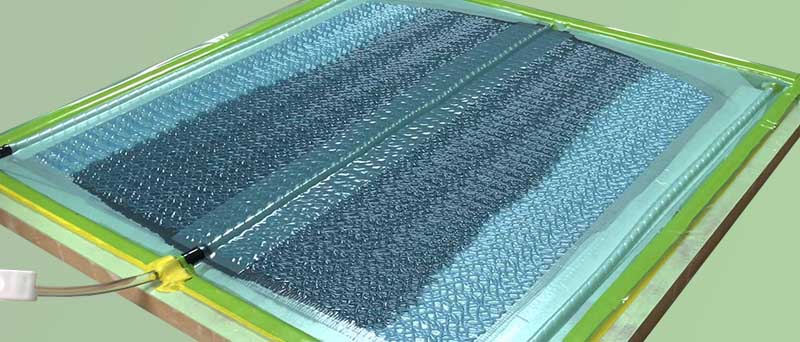
VARTM(Vacuum Assisted RTM) : VARTM is the process that fiber reinforcements are laid up dry in a one-sided mold and vacuum bagged. Liquid resin is then introduced through one or more ports strategically placed in the mold, and drawn by vacuum through the reinforcements by means of a series of designed-in channels and/or carefully placed infusion media that facilitate fiber wetout. Unlike the autoclave, VARTM cure requires neither high heat nor high pressure.

Pultrusion is a continuous process for manufacture of composite materials with constant cross-section. It can create almost any shape, including a wide variety of bars, beams, stringers, stiffeners, pipes and angles. The process starts with racks or creels holding rolls of fiber and it is guided through a resin bath. The impregnated composite is now pulled into a heated die to cure the resin. Once the cured composite profile exits the die, it is then cut into lengths by a cutoff saw.
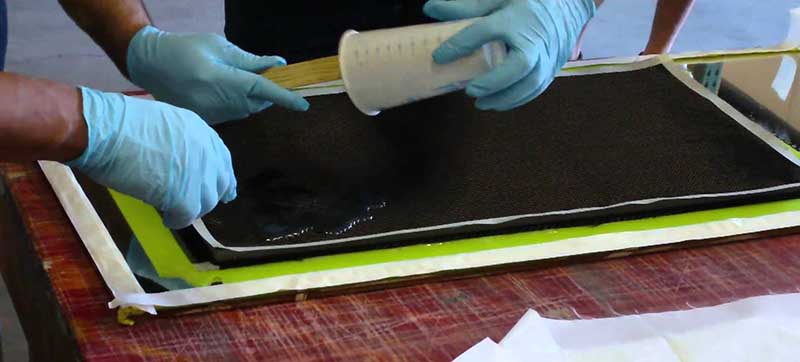
Wet layup is the one of the simplest, least expensive, yet most labor intensive methods of composite manufacturing because it involves manually wetting out the dry reinforcement fibers with resin. Worker can repeat the process until they can achieve the thickness they want.
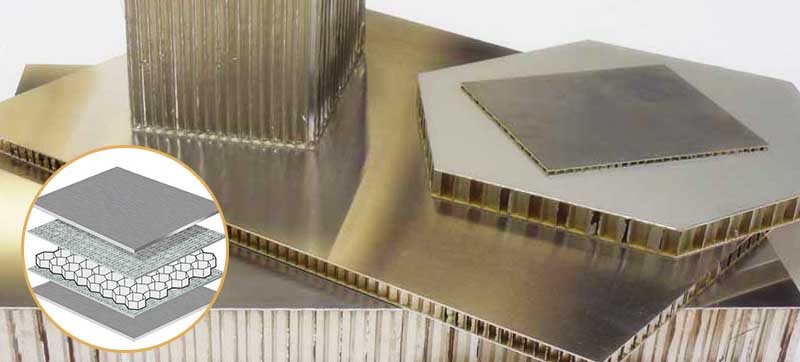
It is a process to improve the performance of the metal physically and chemically by bonding the metal plate with the adhesive film.
There are a step of bonding two or more metal plates and a step of fabricating a sandwich structure in which a core is sandwiched between metal plates.
All metal parts must be properly surface treated prior to bonding to remove contaminants and improve adhesion,
For aluminum, there are fpl etching, chromic acid anodizing (CAA), phosphoric anodizing (PAA).